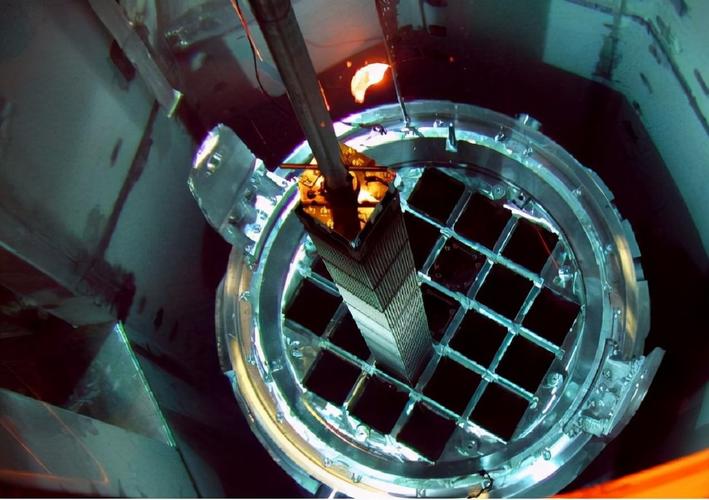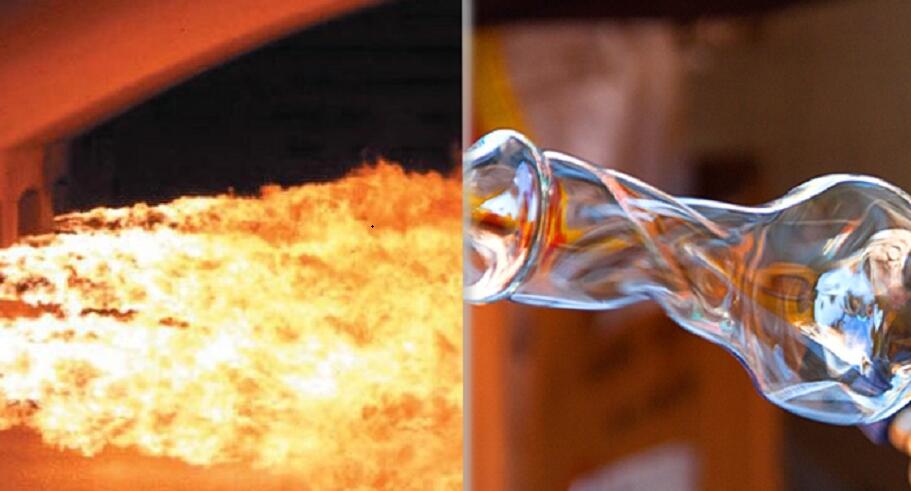What Are the Furnaces with the Highest Temperature Ever Made?

Furnaces are used for heating purposes. They are used to heat substances such as metals, iron, ores etcetera which are to be reshaped or modeled. They are used in providing high temperatures for industrial work.
Generally, there are four (4) popular types of furnaces. They are; natural gas furnaces, oil furnaces, electric furnaces, and propane furnaces. However, across the web, there are over fifteen (15) kinds of furnaces such as electric arc furnaces, crucible furnaces, vacuum furnaces, induction furnaces, roller hearth furnaces, bogie hearth furnaces, rotary furnaces, muffle furnaces, sealed quench furnace, conveyor belt furnace, pit furnaces, pusher furnace, cupola furnaces, and gas furnaces etcetera.
It is a fact that these furnaces have their own special and unique purposes and usages; nevertheless, distinguishing these furnaces based on the heat temperature each generates is not a bad idea in determining which kind or type is suitable for one’s purpose. Based on the foregoing, the electric furnace tops all other kinds of furnaces as its industrial arc could generate a heat temperature of over 1800°C, and its laboratory units could exceed a temperature of 3000°C because it works with a constant supply of electricity for raising and generating its temperature.
The electric furnace is commonly used in melting alloys, that is metallic substances of two or more elements as either compounds or solutions. Likewise, the vacuum furnace with temperature measuring an average of 800OC to 3000°C. Vacuum furnaces like other high-temperature furnaces are used in carrying out processes such as annealing (the process of altering the microstructure of a material to change its properties), brazing (the process of joining two or more metals together), sintering (forming a solid mass of material through the heat without melting), and heat treatment (the process of heating metal without allowing it to reach its molten stage) with high-temperature consistency.
The most unique feature of the vacuum furnace is its low contamination feature and the uniformity in the range of its temperature. The main components of a vacuum furnace include but are not limited to the shell (the vacuum vessel or vacuum chamber), the hot zone, the pumping system, the cooling system, the control system, and the handling system. Furthermore, given the amount of heat produced by these high-temperature furnaces, they are mostly made and designed from refractory metals. Refractory metals are those metallic elements that are generally dense, hard, and extraordinarily resistant to heat and wear. They have a high melting point, high wear resistance, good corrosion resistance, slow diffusion rate, and low oxidation resistance.
They are majorly used in high-temperature applications. Examples of the popular and undisputed refractory metals as shown in the studies are Tantalum (Ta), Tungsten (W), Rhenium (Re), Molybdenum (Mo), and Niobium (Nb). Subsequent paragraphs detail more on the uniqueness of Tantalum (Ta) and its forms such as Tantalum foils and strips and how they are used in high-temperature furnaces. Tantalum foil is a shiny and lustrous metal. It is relatively rare and it is not easily fabricated. Tantalum in its original form is a very yielding metal and can be manipulated by bending, stamping, and pressing. Its features and characteristics include its efficient conductivity of heat and electricity, its high resistance to corrosion, and a high melting point and boiling point at an average of 3017°C and 5458°C respectively; which makes tantalum have the capacity to accommodate and put up with the heat produced or emitted from high-temperature furnaces. In the same vein, tantalum’s chemical resistance level has also made it a valuable substance in the construction and designs of most kinds of high-temperature furnaces.
Moreover, tantalum has been majorly manufactured into rod forms, sheets, plates, powder, tubing, foil, and strips as well as machined and fabricated parts as it meets various purposes and uses. For instance, the Tantalum foil or strip is commonly used as liners in vacuum furnaces and also, and it is used in other heat insulation applications or appliances as well as laboratory equipment that requires an inert metal like tantalum for boiling, heating, cooling, or other necessary utensil needed in the chemical industry. Similarly, tantalum made into rods, sheets, and plates is also generally used in high-temperature furnace components as well as equipment used for chemical processing and other corrosion-resistant objects such as prosthetic devices for humans, surgical instruments, and implants made from porous tantalum coatings, nuts, and bolts, jet engines, rocket nozzles, foil capacitors etcetera.

Finally, based on the amount of heat generated by high-temperature furnaces as earlier mentioned and other applications and appliances that require increased heat, corrosion, and chemical resistance, tantalum foil is one of the metals of choice out of the refractory metals because it offers a unique advantage by making provision for an extremely stable oxide over all other metals; more so, due to tantalum’s high melting point and oxidation resistance, tantalum in its different production forms such as tantalum foil, rods, sheets, plate, discs etcetera are used in the production of insulation barriers in a vacuum and high-temperature furnaces as well as other processes that requires a corrosive resistant object.
{{item.content}}
LEVE A REPLY
{{item.children[0].content}}
{{item.content}}






